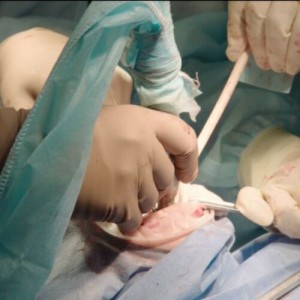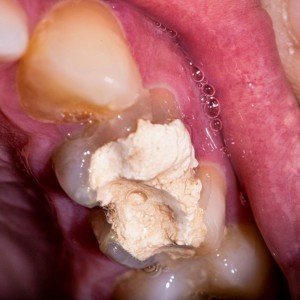
Premature tooth loss in primary dentition: causes and consequences
Alessandra Abbà
Dental caries are frequent and represent real oral health problems even in preschoolers and school children. It is a disease of the hard tissues of the tooth, and it is caused by demineralization processes on dental surfaces.[4] Untreated dental caries in primary teeth affects 9% of the world's population and it is the main cause of premature dental loss during childhood. This cross-sectional study published on Medicine in 2019 wants to analyze this phenomenon as risk factors for loss of space in the posterior sector.
Matherials and mathods
A comparative cross-sectional study (split-mouth type) was performed in seventeen schoolchildren (6-8 years old) from a public school in a community in Hidalgo, Mexico. The mean age was 6.82 ± 0.44 years and 64.7% were boys. A clinical oral examination was performed to identify children with unilateral loss of teeth, interproximal caries (teeth D and/or E) and without affectations on the opposite side. An alginate impression was made for all the children in the group. The dependent variable was the difference (loss of space, mm) between the control and case sides. The independent variables were type of affectation (interproximal caries or tooth loss), sex, age, arcade, and number of interproximal surfaces affected The dependent variable was calculated in the gypsum model as described below. Two measurements were first generated using three possible scenarios.
Measuring the case side:
1. For children in whom tooth D was affected, the distal distance from C to the mesial of E was measured.
2. For children in whom tooth E was affected, the distal distance from D to the mesial of 6 (permanent first molar) was measured.
3.For children in whom teeth D and E were affected, the distal distance of C and the mesial distance of 6 (permanent first molar) were measured.
The same measurements were made on the control side. The difference between the measurements were obtained as follows: case side-control side.
Results:
· 88,2% prevalence of interproximal caries (average of 2.23 ± 1.15 affected surfaces)
· 11,8% prevalence of tooth loss · 52,9% lower arcade
· 1.09 ± 0.18 mm (control vs case; P < .0001) average space loss
Those who presented tooth loss showed a main loss of space than those with interproximal caries (P = .0119). Between the variable loss of space and the number of interproximal surfaces affected a correlation was observed (r = 0.5712, P = .0166).
Conclusions: Interproximal caries and tooth loss were risk factors for loss of space in the posterior area in this sample.
For additional informations
Interproximal caries and premature tooth loss in primary dentition as risk factors for loss of space in the posterior sector
 Related articles
Related articles
Pediatric dentistry 09 October 2025
Smart materials in pediatric dentistry: Revolutionizing care for enhanced outcomes
In the realm of pediatric dentistry, smart materials are reshaping conventional approaches, introducing a responsive and tailored dimension to treatment.
Pediatric dentistry 24 September 2025
The objective of this study was to survey members of the American Academy of Pediatric Dentistry (AAPD) regarding their use of behavior management techniques.
Pediatric dentistry 08 August 2025
Management of pigmented gingiva in child patient: a new era to the pediatric dentistry
Gingival health in the form of size, shape, consistency and appearance are essential components responsible for an attractive smile as well as may cause unpleasant appearance
Pediatric dentistry 17 July 2025
Pediatric restorative dentistry is a dynamic combination of ever-improving materials and tried-and-true techniques.
 Read more
Read more
Much like EMTs rushing to the scene after an accident, stem cells hurry to the site of a skull fracture to start mending the damage. A new finding has uncovered the signaling mechanism that triggers...
Products 05 November 2025
SimplyTest has launched a groundbreaking saliva-based test to detect high-risk strains of oral human papillomavirus (HPV), a major cause of oropharyngeal cancers.
News 05 November 2025
Perimetrics, Inc., a dental technology company pioneering quantitative diagnostics, announced today that the U.S. Food and Drug Administration (FDA) has granted clearance for the InnerView...
News 05 November 2025
On October 15, open enrollment for Medicare began nationwide. Hundreds of thousands of seniors in New Jersey will once again face the challenge of finding the right Medicare coverage, including the...
Digital Dentistry 04 November 2025
Digitalisation is an expanding field in dentistry and implementation of digital teaching methods in dental education is an essential part of modern education.















